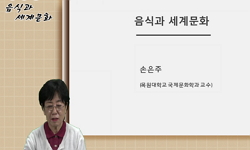In this study, the usage of discourse markers in conversations between friends of Japanese female high school students and conversations between friends of Japanese female university students was analyzed. The results of this study could be summarized...
http://chineseinput.net/에서 pinyin(병음)방식으로 중국어를 변환할 수 있습니다.
변환된 중국어를 복사하여 사용하시면 됩니다.
- 中文 을 입력하시려면 zhongwen을 입력하시고 space를누르시면됩니다.
- 北京 을 입력하시려면 beijing을 입력하시고 space를 누르시면 됩니다.
https://www.riss.kr/link?id=A105924411
- 저자
- 발행기관
- 학술지명
- 권호사항
-
발행연도
2018
-
작성언어
Japanese
- 주제어
-
KDC
830
-
등재정보
KCI등재
-
자료형태
학술저널
- 발행기관 URL
-
수록면
67-82(16쪽)
- 제공처
-
0
상세조회 -
0
다운로드
부가정보
다국어 초록 (Multilingual Abstract)
In this study, the usage of discourse markers in conversations between friends of Japanese female high school students and conversations between friends of Japanese female university students was analyzed. The results of this study could be summarized as follows. The types of discourse markers used in actual conversations are not so different between those of female high school students and those of female university students. Moreover, in both conversations, there are common tendencies in that the proportion of ‘なんか’ is the highest, and the proportion is high in order of ‘じゃない(か)’, とか’, みたいだ’, ‘ちょっと’. However, there were differences in detail usage patterns between female high school students and female university students. in that the preferred discourse markers in both conversations are different and abbreviations are often used in conversations between female high school students. On the other hand, the frequency of use of the discourse markers was higher in conversations between female university students, compared with conversations between female high school students. Multiple discourse markers were used in a single utterance, and this tendency was remarkable even in the co-use of ‘なんか’.
목차 (Table of Contents)
- 1. はじめに
- 2. 研究方法
- 3. 結果及び考察
- 3.1 ディスコース・マーカーの種類
- 3.2 発話文当りのディスコース・マーカーの使用様相
- 1. はじめに
- 2. 研究方法
- 3. 結果及び考察
- 3.1 ディスコース・マーカーの種類
- 3.2 発話文当りのディスコース・マーカーの使用様相
- 3.3 ディスコース・マーカーの共起使用様相
- 4. おわりに
- 参考文献
동일학술지(권/호) 다른 논문
-
評価の高い日本語作文における推敲過程 -読み手としてのコメントと書き手としての修正に 着目して-
- 한국일본언어문화학회
- 小松奈々
- 2018
- KCI등재
-
意志表現の疑問文に関する日韓対照研究 -文法形式の対応関係を中心に-
- 한국일본언어문화학회
- 文彰鶴
- 2018
- KCI등재
-
- 한국일본언어문화학회
- 方允炯
- 2018
- KCI등재
-
- 한국일본언어문화학회
- 全紫蓮
- 2018
- KCI등재





 eArticle
eArticle




